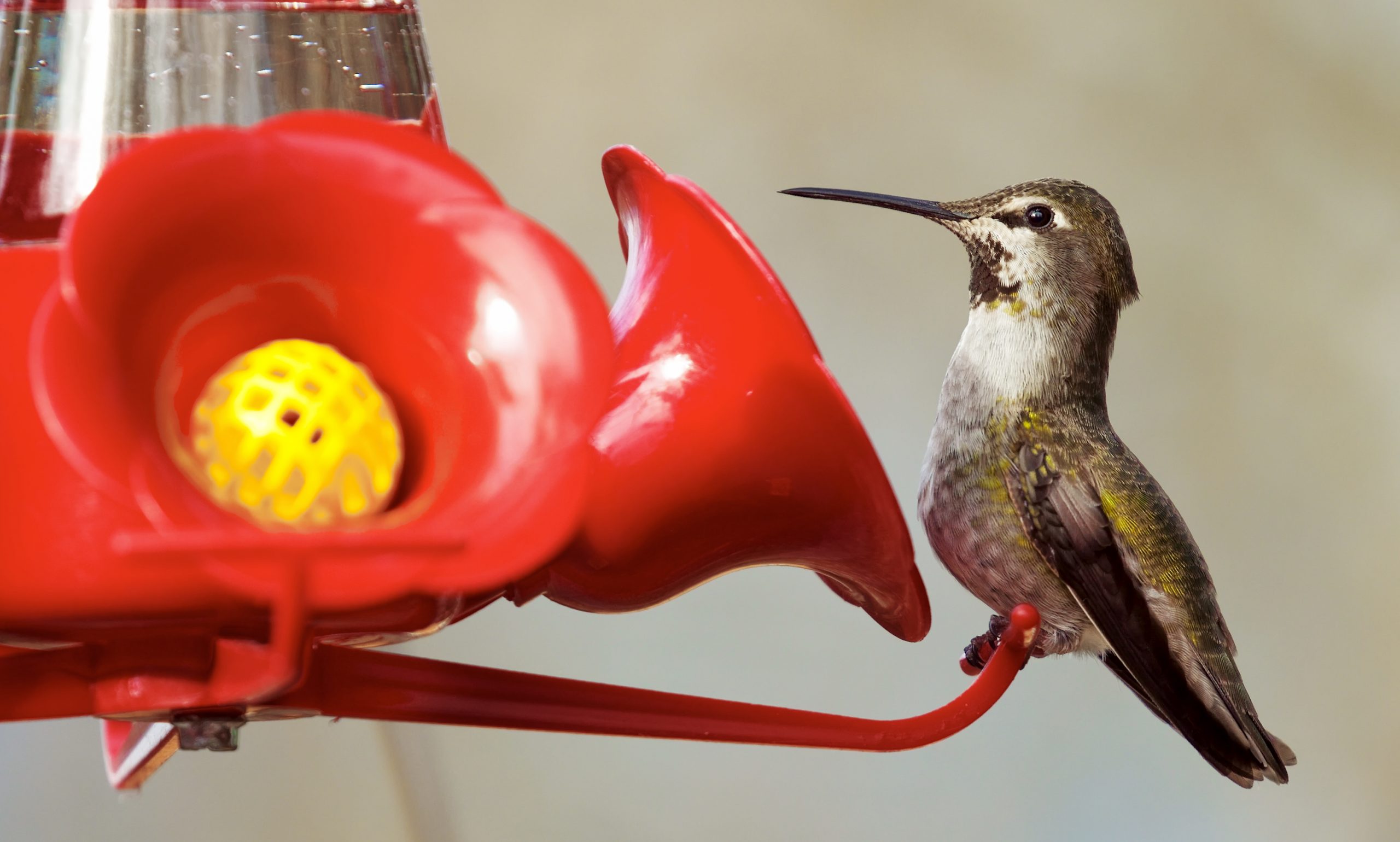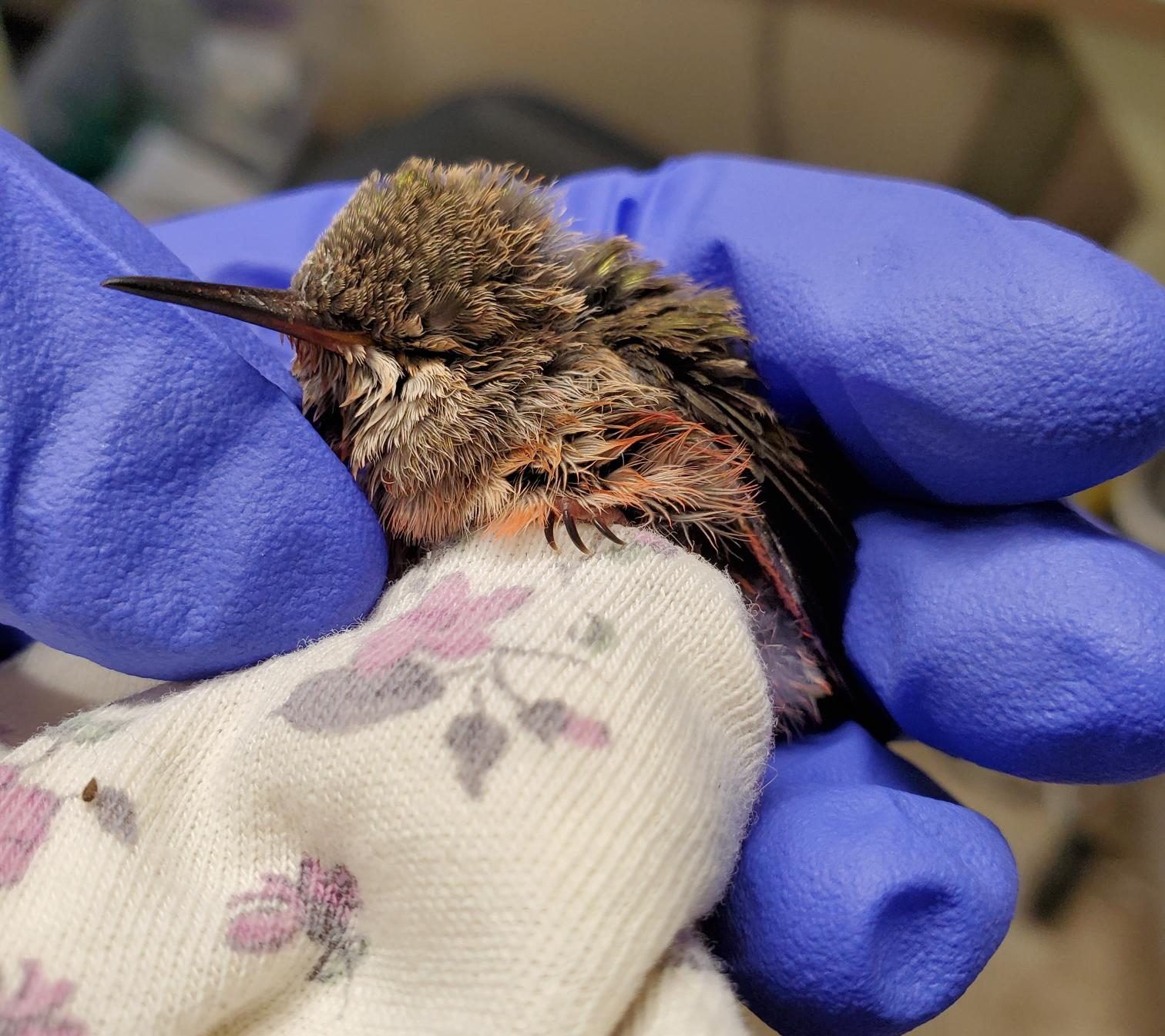Support Us
Since 1979 more than 140,000 animals have been treated by Wildlife Rescue.
Thanks to the support of individuals like you, Wildlife Rescue can provide a lifeline for animals in distress.
While planting a native flowering garden will provide the best natural source of food for hummingbirds, supplementing with a properly maintained hummingbird feeder can provide additional sustenance to local hummingbirds. However, in order to help and not harm, you must ensure your feeders are properly maintained.

The best solution to fill your feeder with is a 1:4 solution of refined white sugar to water!
Please don’t add red dye to your hummingbird feeders. Red dye is unnecessary and potentially harmful.
While no solid research exists to prove that red dye is harmful to hummingbirds, it’s completely unnecessary. Hummingbirds are attracted by the red colours of the feeder itself, not the nectar inside.
Artificial nectars have little if any added nutritional value over sugar water. To avoid causing any possible harm, stick to the 1:4 formula of white table sugar to water, and let the red feeder parts do the work of attracting hummingbirds.
Wildlife Rescue recently admitted a nestling hummingbird covered in red-dyed nectar– the nectar coated the inside of its mouth and soiled its feathers.

Don’t forget to keep those feeders clean! Freshness and purity are important. Therefore, the solution should not just be topped up but changed often. In the summer, clean feeders every day if temperatures exceed 32 degrees or higher and every 2-3 days in cooler temperatures. Never let a feeder sit out for more than three days.
The feeder must be washed before it is refilled to prevent bacteria and mould growth. It is recommended that you hang your feeder at least four feet off the ground, away from trees, and in the shade if possible.
The best size hummingbird feeder for you is one that naturally empties every day or two. Because hummingbirds are territorial, it is also better to have several small feeders than one large feeder that may not empty in time. If you are unable to practice cleaning and hygiene for your feeder it might be a good idea to plant native flowers that attract hummingbirds instead.
For more tips on maintaining your hummingbird feeder, read out blog post The Ultimate Quick Guide to Hummingbird Feeders!